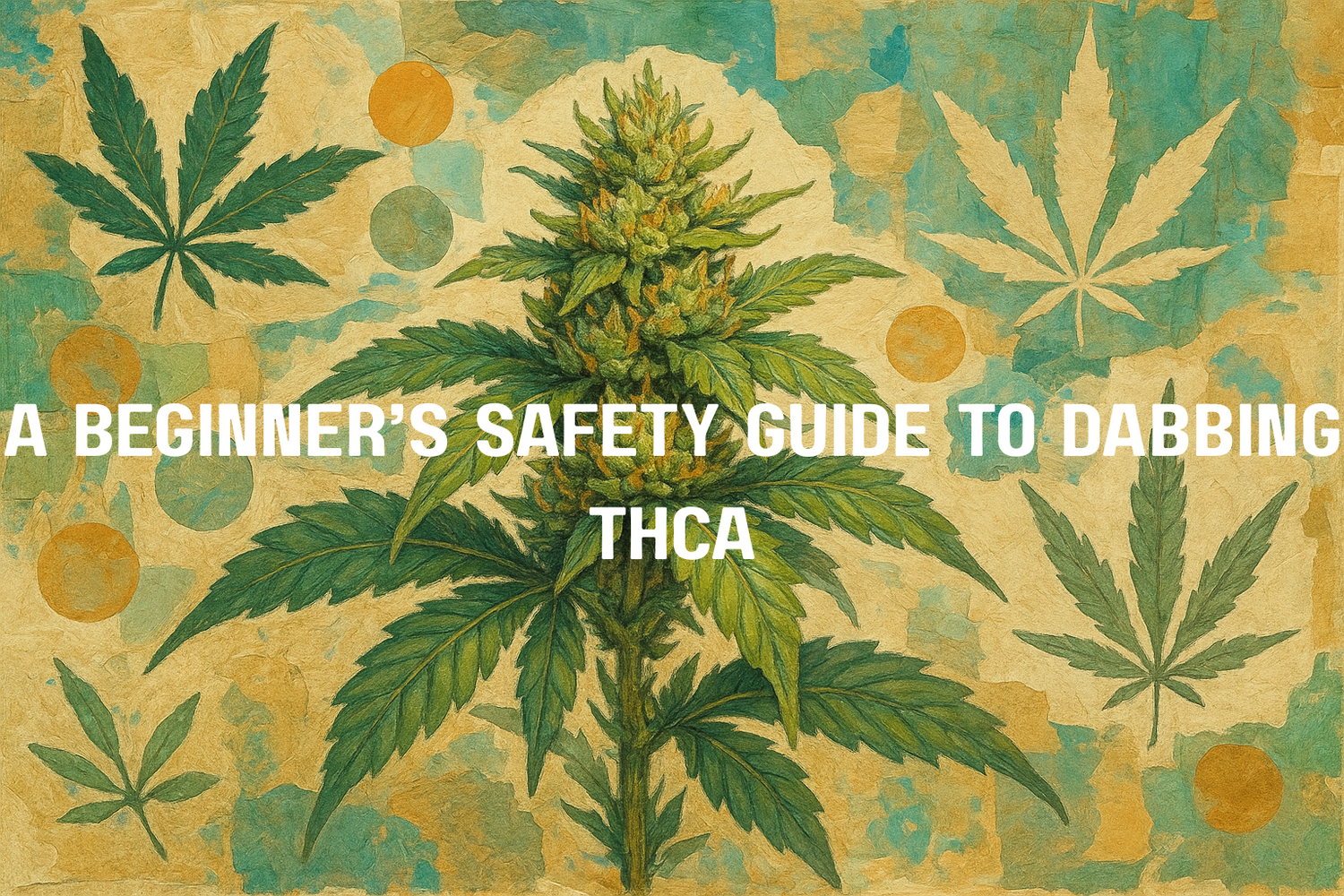Dabbing THCA is more than a trend - it’s a precise chemical transformation, a sensory experience, and, when done right, a highly efficient way to consume cannabinoids. At THCA Trim, we combine connoisseurship with chemistry to help you understand exactly what’s happening from the moment you heat your banger to the second you exhale.
This guide breaks down what THCA is at the molecular level, how temperature affects cannabinoid and terpene conversion, and why evidence-based safety practices matter - especially for beginners.
1. Understanding THCA at the Molecular Level
What is THCA?
THCA (tetrahydrocannabinolic acid) is the acidic precursor to THC. In its natural form, it’s non-psychoactive. The magic happens through decarboxylation - a heat-driven chemical reaction where THCA loses a carboxyl group (-COOH) and becomes delta-9-THC.
Key facts:
Molecular formula: C₂₂H₃₀O₄
Decarboxylation activation energy: ~145–150°C (293–302°F) for optimal conversion.
Volatility: THCA begins to degrade past ~220°C (428°F), forming CBN and other breakdown products.
Why it matters:
If you heat too low, you leave psychoactivity on the table. Too high, and you burn off terpenes, oxidize cannabinoids, and risk inhaling unwanted byproducts.
2. The Science of Dabbing: Thermodynamics in Action
When you dab, three main heat transfer mechanisms occur:
Conduction: The concentrate touches the heated banger/nail.
Convection: Airflow pulls vaporized cannabinoids into the rig.
Radiation: Minimal, but present when the heated surface emits infrared energy.
Optimal range for THCA dabbing:
Low-temp dabs: 232–288°C (450–550°F) → Preserves fragile monoterpenes (myrcene, limonene) for maximum flavor.
Mid-temp dabs: 288–343°C (550–650°F) → Balances potency and flavor.
High-temp dabs: >343°C (650°F) → Maximizes vapor production but degrades terpenes and increases benzene formation risk.
Beginner rule: Start low (around 500°F) to reduce harshness and better control onset.
3. Equipment Selection: Beyond the Basics
For a safe and consistent dabbing experience, invest in precision, not just aesthetics:
Banger Material Science:
- Quartz → High thermal shock resistance, inert, retains heat evenly.
- Titanium → Durable, faster heating, but can impart metallic taste without seasoning.
- Ceramic → Clean flavor but slower heat recovery.
Dabber Tools:
Surgical-grade stainless steel or quartz. Avoid reactive metals that can leach at high temps.
Heating Methods:
- Butane Torch: Manual control, requires practice.
- E-nail: Digital precision within ±1°C, ideal for repeatable results.
4. Dosage: Applying Pharmacokinetics
Why dabs hit harder:
Inhalation has a bioavailability of ~31% for cannabinoids, compared to 4–12% for oral ingestion. THCA converts instantly to THC, delivering peak plasma levels within minutes.
Beginner protocol:
Dose no larger than 25–50 mg of concentrate (~rice grain size, depending on purity).
Wait 15–20 minutes before redosing.
Adjust for potency—90%+ THCA extracts require smaller quantities.
5. Safety Standards: Avoiding Contaminants
Concentrates can concentrate not just cannabinoids, but also contaminants. Always verify:
Residual Solvents: Butane, propane, ethanol. Legal limit (U.S.): ≤ 5000 ppm total hydrocarbons.
Heavy Metals: Arsenic, cadmium, lead, mercury.
Pesticides: Myclobutanil, bifenthrin—can release toxic gases when heated.
How to verify:
Request a Certificate of Analysis (COA) with batch number.
Ensure lab is ISO/IEC 17025 accredited.
Cross-check potency vs. solvent/pesticide results.
6. Maintenance: The Chemistry of Clean Gear
Residue buildup contains polymerized terpenes and oxidized cannabinoids. Over time, this can produce acrid flavors and harshness.
Best practice cleaning regimen:
After each dab: Swab banger with cotton + 99% isopropyl alcohol.
Weekly deep clean: Soak glassware in ISO, rinse with distilled water to avoid mineral deposits.
7. Storage Stability: Protecting Cannabinoid Integrity
Degradation pathways:
Light: UV photons break down THC into CBN.
Heat: Accelerates oxidation.
Oxygen: Promotes terpene evaporation and cannabinoid breakdown.
Optimal storage conditions:
Airtight glass jars with PTFE liners.
Opaque or UV-resistant packaging.
Temperature: 0–4°C (fridge). Avoid freezing to prevent moisture condensation.
Conclusion
Dabbing THCA is both an art and a science. By understanding the molecular chemistry, thermodynamics, and pharmacokinetics involved, you gain full control over your experience. For beginners, that means safer, smoother, and more predictable results—without sacrificing flavor or potency.
At THCA Trim, we don’t just sell premium trim and concentrates - we educate, because informed consumers make safer choices and enjoy better sessions.

